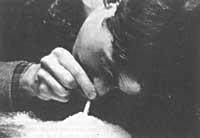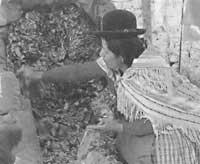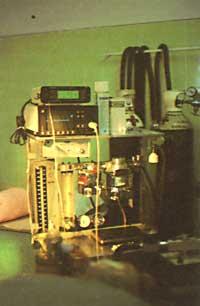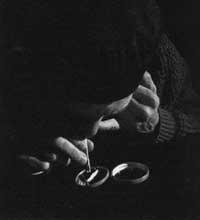History of cocaine
1991/05/01 Agirre, Jabier - Medikua eta OEEko kidea Iturria: Elhuyar aldizkaria
Steven B. By Karch's hand we have had the opportunity to read a pleasant and acidic journey on the history of cocaine toxicity. Human Pathology 1989 20:1.037-1.039). In it, in addition to historical strokes, the problem is posed today as one of the greatest dramas of public health; the National Institute on Drug Abuse of the USA estimated in 1974 that in the United States there were 5.5 million cocaine users. This figure was 21.5 million in 1982 and 25 million in 1986. In 1987, 1,700 deaths were reported directly related to cocaine.
Most current users consume doses and concentrations far higher than those used to date, probably due to the decrease in cost and the greater ease of access to the drug.
Without discarding or despising at all the epidemiological and sanitary importance of the problem, today we will make a journey through the history of cocaine, always without forgetting the aforementioned Steven B. Based on Karch's work.

The term coca comes from the word khoka used by the Andean Indians to designate the trees. When the Spaniards arrived in Peru in 1500, their Indians had spent thousands of years consuming cocaine. The amount was small: every day about 60 g of leaves were chewed, that is, between 200 and 300 mg of alkaloid. Cocaine causes local vasoconstriction, so the alkaloid was slowly absorbed through the oral mucosa, without causing pathological effects.
There is historical evidence that the Indians applied high concentrations of coca to the wounds, obtaining local anesthesia. In the same way, the anesthesia obtained with cocaine can explain why incentric doctors often made cranial trepanations.
The entry of cocaine into Europe gave a new impetus to history. From a medical point of view, a remarkable fact was that Al-bert Nieman, the young pharmacological graduate of Götingen, would isolate the alkaloid from cocaine by 1860.
In 1863 the French Angelo Mariani began to market a wine reinforced with extracts of coca leaves. Ten years later, this wine achieved great success in the United States, where doctors advised as a remedy for many diseases. It was widely used as a treatment in the withdrawal situation of opium users.
In 1885 John Styth Pemberton registered the French wine queue to compete with Mariani wine. For commercial reasons, the wine was replaced by caffeine. The following year the product was called Coca-Cola, initially marketed as therapeutic elixir. But then, when Candler bought it, they tried to underline their ability to create pleasure. Currently Coca-Cola is prepared with coca leaves, after the removal of the alkaloid.
Until 1890-1900 the consumption of cocaine products was low. But then the situation changed sharply. Drug manufacturers began incorporating cocaine into several pharmacists: an asthma remedy, such as that of Dr. Tucker, contained 420 mg of cocaine for breeding, 8 times more than Mariani wine. In addition, it was recommended that this remedy and the like could be used directly on the nasal mucosa.
Therefore, cocaine imports grew dramatically and the first deaths began to appear: 2 cases in 1893, 6 cases in 1895 and 1910 cocaine related deaths were 26.
Today, cocaine users claim to have used several grams one afternoon. For many forensic specialists, most of them, to recognize that death is caused by cocaine, blood concentration should exceed 5 mg/l. However, it is increasingly accepted that minimum concentrations of cocaine in chronic consumers are also able to cause death abruptly.
Since the appearance of so-called crack there has been an increase in toxicity, as this type of drug is prepared for burning, obtaining very high blood concentrations quickly. But this problem is beyond the limits of our current work and, on the other hand, Elhuyar has already been treated. (see Elhuyar. Science and Technology. Number 35. May 1990. Crack drug, last pest 26-28. p. ).

Gai honi buruzko eduki gehiago
Elhuyarrek garatutako teknologia






